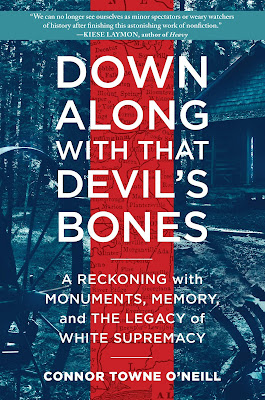Editor's Note: This review was originally published in Manhattan Book Review.
Debates about the significance and symbolism of monuments to the Confederacy evoke wildly divergent points of view about Southern history and legacy, often underscoring deep gulfs between the experiences and realities of Black and white Southerners. Philadelphia native Connor Towne O’Neill traveled to Alabama and Tennessee to document the duality of present-day challenges to persistent efforts to commemorate the legacy of Confederate Army General Nathan Bedford Forrest: slave owner, slave trader, and first Grand Wizard of the Ku Klux Klan.
The author merges narratives from the past to the present, reflecting upon the intents and impacts of revisionist Civil War history. O’Neill talked to activists on both sides of the divide and puzzled over the meaning of Forrest’s legacy to Southern whites who put up their own money and resources to enshrine the memory of a man who killed fellow Americans to assert his right to keep slaves and supported white violence against Blacks during Reconstruction. He learned that whites who support Forrest view his rags-to-riches mythology as part of white Southern white history. Meanwhile, Black residents in Selma, Murfreesboro, and Nashville, share the torment of generational pain while living in the constant shadow of white intimidation and terror.
Whose history matters? The most poignant parts of the book showcase the author’s personal musings about his social location and complicity in an oppressive system, perfected in a country that prospered from imposing racial hierarchies. O’Neill, who traces his ancestry to Europeans who descended upon Plymouth Rock, contemplates how his identity and heritage as a white Northern man upholds the ideology of white supremacy. Amid the renewed sense of urgency toward a racial reckoning, O’Neill models how one might consider unintended abetment and reproduction of destructive racial ideologies.
